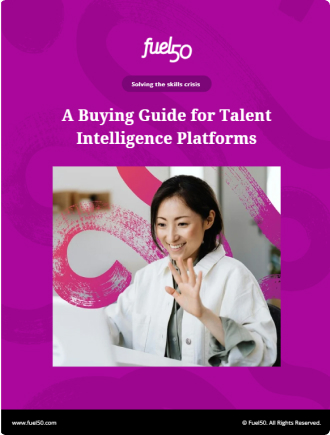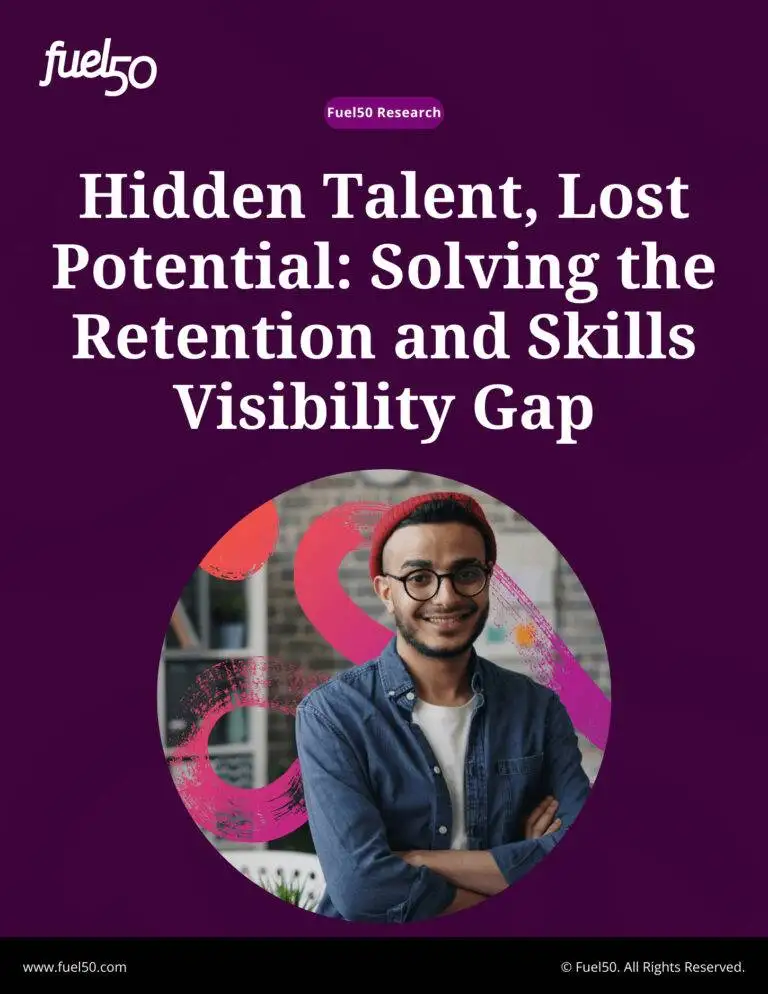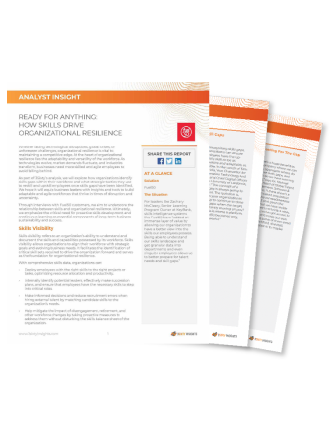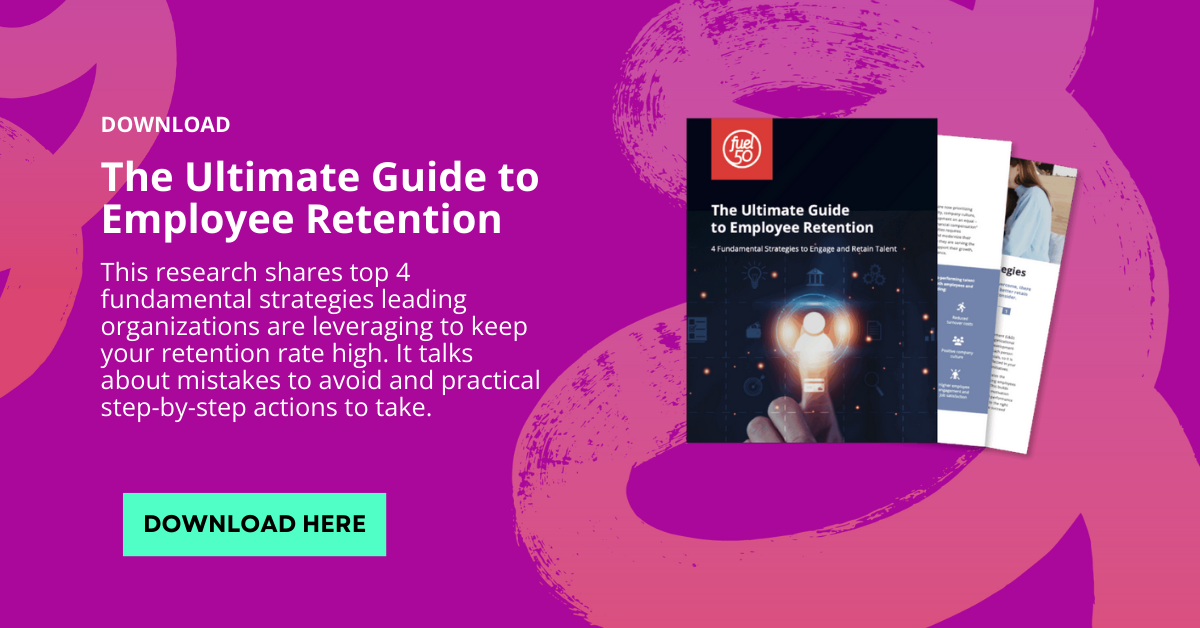Work is an essential part of our lives – it pays our bills, influences our lifestyle, and for most, it brings a sense of success, joy, and achievement. On average, we spend 90,000 hours at work over a lifetime – that’s close to one-third of our entire lives, so it’s no surprise how much work impacts our happiness, health, well-being, and overall quality of life.
Human-centric workplaces recognize the link between a person’s job and how it affects their professional and personal life. The concept stems from human-centered design, where solutions and products are designed with people in mind – ensuring you understand the people you are designing for, and whether it fits their needs, behaviors, and personal circumstances.
While the ideas around a human-centric workplace are far from new, the importance of caring for employee needs has become much more evident post-pandemic. It was an important topic of discussion at this year’s FuelX Talent Mobility Conference, with industry analysts Robin Erickson and Paul Corke reiterating that now is the time for organizations to adopt and embrace a more human approach to talent management:
“We’re all humans first. During the pandemic we have become more compassionate, it’s now up to organizations to display that in the way they do business.” – Paul Corke, HR Analyst and Author
I’m hopeful that organizations will realize that they have to be more human-centric, that they have to care about their employees or they’re going to go somewhere else.” – Robin Erickson Ph.D., Vice president of Human Capital, The Conference Board
We’re moving away from seeing employees as cogs in a well-oiled machine, but rather, as ‘whole people’, according to Scott Behson, author of ‘The Whole-Person Workplace’. Behson believes leaders must value each employee as a whole person, which means they recognize, appreciate, and try to help employees with their challenges, responsibilities, priorities, and passions both in and outside of work.
It comes down to treating employees with respect and truly caring about their needs. Once you start fostering a human-centric culture within your organization, you begin to attract and retain high-performing talent who are empowered to engage with your company’s purpose and vision.

What makes a human-centric workplace?
The key principles associated with human-centered design can also be applied when aiming to build a workplace culture that values its people. It includes three important elements – empathy, creativity, and business needs.
Empathy: You have to genuinely care about your employees. Connect with your people – take the time to understand their needs, emotions, values, and perspectives.
Creativity: With the world of work constantly changing, it’s important to continually reassess problems and concerns faced by your employees and find new and creative ways to solve them.
Business needs: Your business will flourish when your employees flourish. Creating a workplace environment that supports the growth and development of your people will better enable employees to achieve key strategic objectives.
These elements are the fundamental building blocks for creating a more human-centric and empathetic work environment. Let’s dive into some practical methods that can help humanize your talent strategy, and effectively transform your company culture.
Ways to humanize your talent strategy
1. Listen, listen, and listen some more
Talent transformation expert and founder of The Corporate Humanist Consultancy, Larry McAlister says organizations need to first ask themselves “are you serving your communities, and are you serving your employee’s wellbeing?” If the answer is ‘no’ or ‘not as well as we should be’, it’s clear your talent strategy needs a major refresh.
To truly understand what your employees want and desire in the workplace, you must first make listening a priority. Start encouraging employees to share their thoughts, ideas, and concerns with their leaders and HR teams. Your employees will never feel heard if they don’t feel comfortable being honest and vocal about their feedback. Online surveys and forms offer a secure way for employees to voice their opinions anonymously without fear of judgment or retribution.
People leaders must also make this a priority within their teams by engaging in meaningful conversations with each team member, enabling open discussions about their work experiences, and offering opportunities to provide constructive feedback. Once employees feel comfortable speaking up, and know their voices are valued, they will become more forthright and honest with their feedback, allowing you to make more informed decisions about employee-related policies and procedures.
2. Craft a talent experience that employees will love
What brings happiness to your people? Nick Holmes, Global Head of Career Experience at Fishawack Health reflected on this question at the FuelX Talent Mobility Conference in London. He shared research from the Journal of Experimental Psychology that reveals the correlation between experiences and happiness, indicating that money spent on ‘doing’ promotes more moment-to-moment happiness than money spent on ‘having.’
When applying this to work, Nick Holmes explains that organizations need to create positive experiences for employees otherwise they risk being a blocker of innovation and creativity, or losing talent completely. “Without talent experience, we lose innovation, productivity will wane, motivation goes, and great people will just leave.”
A successful talent experience is designed to build a more engaged and motivated workforce and ultimately fosters a robust employee-employer relationship. It includes:
- Cultivating a strong sense of progression and purpose in your people
- Showing employees that they are trusted and valued
- Motivating employees with modern performance management
- Closing skills gaps while offering career training that employees desire
- Nurturing collaboration and teamwork throughout the organization
Crafting a talent experience that encompasses these human-centric capabilities requires HR technology that puts people first. A talent marketplace like Fuel50 is grounded in human centricity and focuses on understanding the needs, values, and aspirations of employees to enable organizations to better understand their people and align internal career opportunities to match.
Having a deeper understanding of the values and goals of your people and utilizing that information to fuel employee initiatives is the backbone of the Fuel50 talent experience that employees will love.
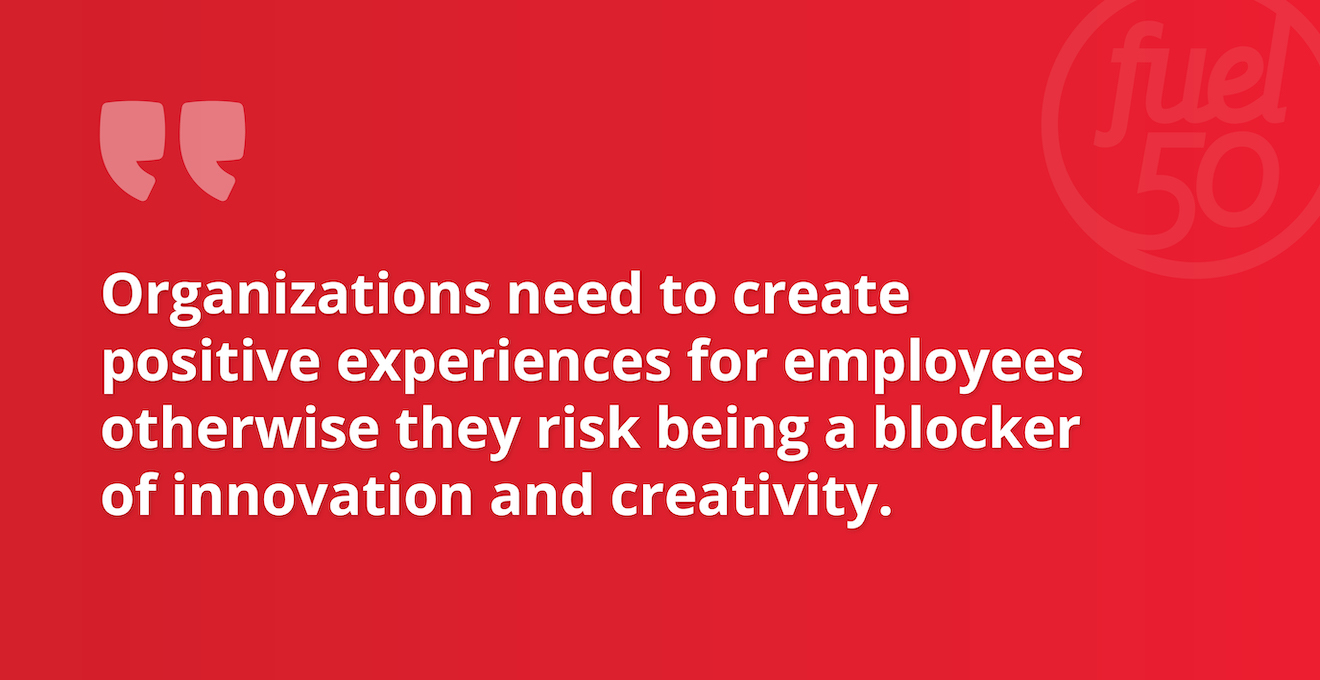
3. Lead by example
According to Nick Holmes, leaders are critical for creating movement and transformation within a business. Once top management becomes more involved and engaged with human-centric capabilities, it starts to trickle down and spread within the business. It then influences your workplace culture and starts to create a ‘people-first’ environment. Transforming your entire company culture may seem daunting, but those first few changes can make all the difference.
“You’ve got to create the environment for this to be successful… and it starts with the leaders. You can start a movement with one or two people talking about this… culture starts with drum beats, not lightning bolts.” – Nick Holmes
The Fast Company Executive Board points out the following policies human-centric leaders should offer the workforce of today:
- Flexibility: Be as flexible as you can regarding schedule, work location, and management. If you allow people to work when and how they prefer, they will give you their best work.
- Room for failure: A human-centric workplace builds in space for productive failure. Knowing that people are human and will make mistakes, an empathic leader creates processes that help people learn from mishaps and move forward.
- Gratitude: Visionary leaders don’t just see the business at the highest level. They also notice and show appreciation for employees giving their best.
Industry analyst and author, Mervyn Dinnen, touched on the need for transparency and accountability from leaders to make a humanistic transformation successful. And that at the end of the day, all that matters is that you’re on your employee’s side, advocating for whatever they need to be successful and thriving.
“There is accountability for leaders now. It’s about treating your people well… people knowing that you’re supporting them. You’ve got their back and they know that you’re on their side.” – Mervyn Dinnen, Industry analyst, Author & Podcaster

